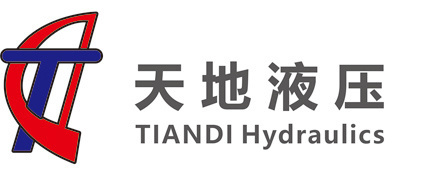GET THE LATEST NEWS FROM THE COMPANY
NEWS CATEGORY
Understanding Counterbalance Valves: Key Components for Efficient Hydraulic Systems
Published:
2025-07-04 14:00
Counterbalance valves are crucial components in hydraulic systems, particularly in industrial machinery and equipment. They play a vital role in controlling the movement of loads, ensuring that they remain stable and do not descend uncontrollably. This feature is especially important in applications such as cranes, forklifts, and excavators, where heavy loads are frequently lifted and maneuvered.
At their core, counterbalance valves function by maintaining a predetermined pressure in the hydraulic circuit. This pressure acts as a counterforce to the weight of the load, effectively preventing it from falling unintentionally. When the operator wishes to lower the load, the valve allows hydraulic fluid to flow back into the reservoir while still maintaining the necessary pressure to control the descent speed. This controlled release helps prevent sudden drops, enhancing both safety and precision in operations.
One of the significant advantages of counterbalance valves is their ability to improve the overall efficiency of hydraulic systems. By providing a stable pressure environment, these valves help to reduce the risk of hydraulic shock, which can lead to system failures and increased maintenance costs. Additionally, counterbalance valves can help optimize energy consumption within the hydraulic system, as they reduce the need for excess pump capacity to counteract the weight of loads.
In terms of design and functionality, counterbalance valves come in various configurations to suit different applications. They can be integrated into the circuits of hydraulic cylinders or installed as standalone components. When selecting a counterbalance valve, it is essential to consider factors such as the flow rate, pressure rating, and the specific requirements of the machinery in which they will be used.
Furthermore, regular maintenance and testing of counterbalance valves are critical to ensure their reliability and performance. Operators should periodically check for signs of wear, leakage, or malfunction, as any issues can compromise the safety and efficiency of the hydraulic system. Proper calibration and adjustment of these valves are also necessary to maintain optimal performance levels.
In conclusion, counterbalance valves are integral to the safe and efficient operation of hydraulic systems in various industrial applications. By understanding their function and importance, operators can ensure the reliability of their machinery, improve safety measures, and enhance overall productivity. Investing time in the selection and maintenance of these components will lead to better operational outcomes and a safer working environment.
At their core, counterbalance valves function by maintaining a predetermined pressure in the hydraulic circuit. This pressure acts as a counterforce to the weight of the load, effectively preventing it from falling unintentionally. When the operator wishes to lower the load, the valve allows hydraulic fluid to flow back into the reservoir while still maintaining the necessary pressure to control the descent speed. This controlled release helps prevent sudden drops, enhancing both safety and precision in operations.
One of the significant advantages of counterbalance valves is their ability to improve the overall efficiency of hydraulic systems. By providing a stable pressure environment, these valves help to reduce the risk of hydraulic shock, which can lead to system failures and increased maintenance costs. Additionally, counterbalance valves can help optimize energy consumption within the hydraulic system, as they reduce the need for excess pump capacity to counteract the weight of loads.
In terms of design and functionality, counterbalance valves come in various configurations to suit different applications. They can be integrated into the circuits of hydraulic cylinders or installed as standalone components. When selecting a counterbalance valve, it is essential to consider factors such as the flow rate, pressure rating, and the specific requirements of the machinery in which they will be used.
Furthermore, regular maintenance and testing of counterbalance valves are critical to ensure their reliability and performance. Operators should periodically check for signs of wear, leakage, or malfunction, as any issues can compromise the safety and efficiency of the hydraulic system. Proper calibration and adjustment of these valves are also necessary to maintain optimal performance levels.
In conclusion, counterbalance valves are integral to the safe and efficient operation of hydraulic systems in various industrial applications. By understanding their function and importance, operators can ensure the reliability of their machinery, improve safety measures, and enhance overall productivity. Investing time in the selection and maintenance of these components will lead to better operational outcomes and a safer working environment.
Counterbalance valves
previous page
previous page
Related news
2025-06-30
2025-06-28

